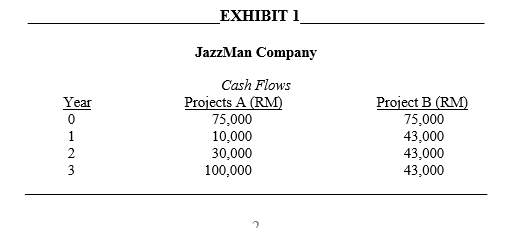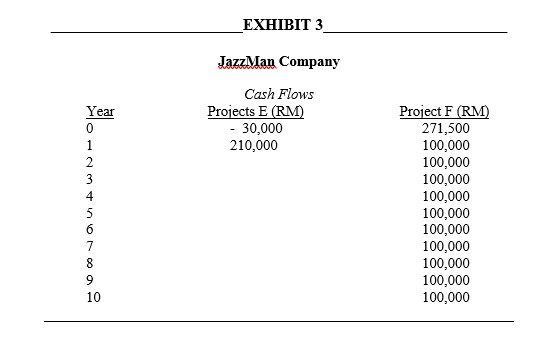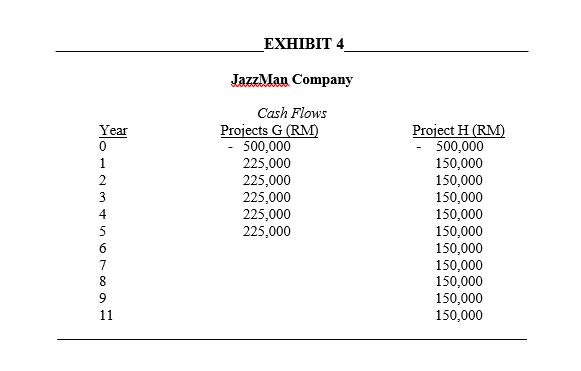Question
On January 11, 1993, the finance committee of JazzMan Company (JMC) met to consider eight capital budgeting projects. Present at the meeting were Jazman Mohammad,
On January 11, 1993, the finance committee of JazzMan Company (JMC) met to consider eight capital budgeting projects. Present at the meeting were Jazman Mohammad, president and founder; Suzana Razali, comptroller; and Diana Yusuf, head of research and development. Over the past 5 years, this committee has met every month to consider and make a final judgement on all proposed capital outlays brought up for review during the period.
JazzMan Company was founded in 1972 by Jazman Mohammad to produce plastics part and molding for Kuala Lumpur automakers. For the first 10 years of operations, JMC has worked solely as s subcontractor for the automakers, but since then the company has made strong efforts to diversify in order to avoid the cyclical problems faced by the auto industry. By 1988, this diversification attempt had led JMC into the production of over 1,000 different items, including kitchen utensils, camera housings and phonographic and recording equipment. It had also led to an increase in sales of 500% during the 1982-1992 period. As this dramatic increase in sales was paralleled by a corresponding increase in production volume, JMC was forced, in late 1991, to expand production facilities. This plant and equipment expansion involved capital expenditures of approximately RM10.5 million and resulted in an increase of production.
JMC has made a concerted effort to attract new business and, consequently, has recently entered into contracts with a large toy firm and a major discount department store chain. Still, non-auto related business represents only 32% of JMC's overall business. Thus, JMC has continued to solicit non-automotive business, and as a result of this effort and its internal research and development, the firm has four sets of mutually exclusive projects to consider at this month's finance committee meeting.
Over the past 10 years, JMC's capital budgeting approach has evolved into a somewhat elaborate procedure in which new proposals are categorized into three areas: profit, research and development, and safety. Projects falling into the profit or research and development area are evaluated using present value techniques, assuming a 10% opportunity rate; those falling into the safety classification are evaluated in a more subjective framework. Besides the requirement that research and development projects receive favorable results from the present value criteria, a total ringgit limit is assigned to projects of this category - typically about RM750,000 per year. This limitation was imposed by Jazman primarily because of the limited availability of quality researchers in the plastics industry. He felt that if more funds than this were allocated, "we simply couldn't find the manpower to administer them properly." The benefits derived from safety projects, on the other hand, are not measured in terms of cash flows; hence, present value methods are not used in their evaluation. Evaluating safety projects is a pragmatically difficult task requiring quantifying the benefits from these projects into ringgit terms. Thus, safety projects are subjectively evaluated by a management worker committee with a limited budget. All eight projects to be evaluated in January are classified as profit projects.
The first set of projects listed on the meeting's agenda for examination involve the utilization of JMC's precision equipment. Project A calls for the production of vacuum containers for the thermos bottles produced for a large discount hardware chain. The container would be manufactured in five different size and color combinations. This projects would be carried out over a three-year period, for which JMC would be guaranteed a minimum return plus a percentage of the sales. Project B involves the manufacture of inexpensive photographic equipment for a national photography outlet. Although JMC currently has excess plant capacity, each of these projects would utilize precision equipment whose excess capacity is limited. Thus, adopting either project would tie up all precision facilities. In addition, the purchase of new equipment would be both prohibitively expensive and involve a time delay of approximately two years, thus making projects A and B mutually exclusive. (The cash flow associated with projects A and B are given in Exhibit 1)




EXHIBIT 1 JazzMan Company Cash Flows Year Projects A (RM) Project B (RM) 0123 75,000 75,000 10,000 43,000 30,000 43,000 100,000 43,000
Step by Step Solution
There are 3 Steps involved in it
Step: 1

Get Instant Access to Expert-Tailored Solutions
See step-by-step solutions with expert insights and AI powered tools for academic success
Step: 2

Step: 3

Ace Your Homework with AI
Get the answers you need in no time with our AI-driven, step-by-step assistance
Get Started


